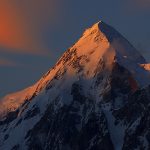Batura I Mountain in Pakistan, part of the majestic Karakoram Range, stands as one of Pakistan’s most awe-inspiring peaks. Towering at an elevation of 7,795 meters (25,574 feet), it ranks as the 25th highest mountain in the world and is a centerpiece of the Batura Muztagh subrange. Known for its grandeur and challenging terrain, Batura I is a dream destination for mountaineers and adventurers from across the globe.
Location and Significance
Nestled in the Hunza Valley of Gilgit-Baltistan, Batura I is a symbol of the region’s rugged beauty. It lies near the Batura Glacier, one of the longest glaciers in the world, stretching over 57 kilometers. The mountain’s stunning surroundings, including verdant valleys and picturesque villages, make it a natural wonder worth exploring.
Why Visit Batura I in 2025?
- Stunning Landscapes: The area offers dramatic views of towering peaks, sprawling glaciers, and lush alpine meadows.
- Less Crowded: Unlike more famous peaks, Batura I provides a peaceful and secluded adventure.
- Cultural Richness: Visitors can immerse themselves in the unique traditions and hospitality of the local Wakhi and Burusho communities.
Features of Batura I

- Prominence: Batura I is the highest peak in the Batura Muztagh subrange, making it a prominent landmark in the Karakoram Range.
- Batura Glacier: The nearby glacier is not only a stunning sight but also a critical source of water for the region’s ecosystem.
- Climbing Routes: The mountain offers challenging routes that test even the most experienced climbers.
Case Study: The 2024 German Expedition to Batura I
In the summer of 2024, a team of five experienced German mountaineers set their sights on Batura I. Their mission was to explore an uncharted climbing route while adhering to eco-friendly practices to minimize their impact on the fragile environment.
The team spent months in Germany planning their expedition, gathering data about the mountain’s topography and climate. They consulted local guides in Hunza and hired porters from the nearby villages to assist with logistics.
The expedition faced several challenges. Unpredictable weather conditions brought snowstorms that delayed their ascent. The steep ridges and ice walls demanded advanced climbing techniques and physical endurance. At an altitude of 6,500 meters, one climber experienced mild altitude sickness, requiring an immediate pause for acclimatization.
After 21 days of climbing, the team successfully reached the summit of Batura I. They celebrated their achievement by planting a flag and documenting their experience with breathtaking photographs.
The expedition emphasized the importance of teamwork, meticulous planning, and respecting the natural environment. The team also contributed to the local economy by employing local guides and promoting sustainable tourism practices. Their journey not only highlighted the allure of Batura I but also demonstrated how responsible tourism can create a positive impact on the region.
Trekking Adventures Around Batura I

You don’t have to be a climber to enjoy the beauty of Batura I.
- Batura Glacier Trek: This trek takes you along the stunning glacier, offering breathtaking views of the surrounding peaks, including Batura I.
- Base Camp Trek: A moderately challenging trek that allows adventurers to explore the base camp and the nearby wilderness.
- Passu to Batura Trek: A route that combines natural beauty with cultural exploration, passing through charming villages and offering panoramic mountain views.
Tips for a Successful Adventure
- Acclimatization: Ensure proper acclimatization to the high altitude to avoid altitude sickness.
- Experienced Guides: Hire local guides with expertise in navigating the region’s challenging terrain.
- Preparation: Pack all essential gear, including warm clothing, climbing equipment, and medical supplies.
- Respect Nature: Follow eco-friendly practices to preserve the pristine environment.
The Culture and Wildlife of Batura I
The Hunza Valley, home to Batura I, is a treasure trove of culture and biodiversity. The local communities are known for their hospitality and rich traditions, including unique music, cuisine, and handicrafts. The region is also a haven for wildlife enthusiasts, offering sightings of rare species like the snow leopard, Himalayan ibex, and golden eagle.
A Photographer’s Paradise
Batura I and its surroundings provide endless opportunities for photography. From the shimmering ice of the Batura Glacier to the vibrant colors of the alpine meadows, every corner of this region is picture-perfect. Whether capturing the golden hues of sunrise over the peaks or the star-studded night sky, photographers will find their creativity flourishing here.
Table of Contents
Why Batura I Deserves Global Recognition
Despite its breathtaking beauty and significance, Batura I remains less known compared to other peaks in the Karakoram. However, its untouched allure and the challenge it offers make it a must-visit for adventurers and nature lovers alike.
External Link for Further Reading
For more details on Batura I Mountain, check out this resource.
Conclusion: Batura I Mountain in Pakistan
Batura I Mountain is a masterpiece of nature that embodies the untamed spirit of the Karakoram Range. Whether you’re an avid climber seeking your next conquest or a traveler yearning for a connection with nature, Batura I offers an experience like no other.
Plan your visit to Batura I in 2025 and immerse yourself in the extraordinary beauty, culture, and adventure that this majestic peak has to offer. With its unique charm and endless opportunities for exploration, Batura I promises memories that will last a lifetime.


